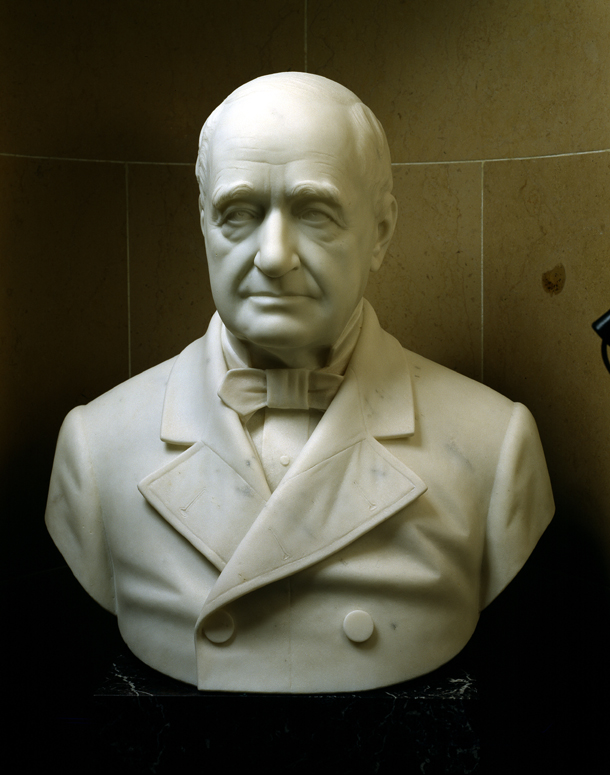
| Title | Hannibal Hamlin |
| Artist/Maker | Franklin Bachelder Simmons ( 1839 - 1913 ) |
| Date | 1889 |
| Medium | Marble |
| Dimensions | h. 29 x w. 26.38 x d. 15.5 in. (h. 73.7 x w. 67 x d. 39.4 cm) |
| Credit Line | U.S. Senate Collection |
| Accession Number | 22.00015.000 |
Hannibal Hamlin was one of three former vice presidents who was alive in 1886 when the U.S. Senate passed a resolution establishing a Vice Presidential Bust Collection for display in the Senate Chamber. The Joint Committee on the Library subsequently asked each of these three men to designate a sculptor, and Hamlin selected Maine native Franklin Simmons. Although Simmons’s studio was in Rome, the sculptor agreed to model Hamlin from life in Maine. Simmons’s departure for the United States was delayed, however, while he worked on a statue of the American poet Henry Wadsworth Longfellow for the city of Portland, Maine. After finally holding sittings with Hamlin in 1888, Simmons finished the marble bust by May of 1889. It was placed in the U.S. Capitol in August of the following year. A replica, also executed by Simmons, is now at Hebron Academy in Hebron, Maine.
A member of the so-called second generation of American sculptors in Rome, Franklin Simmons was awarded many commissions during a long, active career. The state of Rhode Island selected him to execute a full-length statue of Roger Williams for inclusion in the U.S. Capitol’s National Statuary Hall Collection. Simmons also sculpted busts of Adlai E. Stevenson and Charles W. Fairbanks for the Senate’s Vice Presidential Bust Collection.
Hannibal Hamlin served for nearly 50 years as a U.S. representative and senator from Maine, and as 15th vice president of the United States. Hamlin began his political career in the state legislature where he served three terms as Speaker. In 1843 he moved to the U.S. House of Representatives. During his two terms in the House of Representatives, Hamlin played an important role in the debate over slavery. In 1846 he joined forces with other antislavery members to propose an amendment that would prohibit slavery in any territory taken from Mexico as a result of the Mexican-American War. Representative David Wilmot introduced the measure that became known as the Wilmot Proviso, while Hamlin introduced a proviso of his own. Neither measure succeeded.
In 1848 Hamlin won election to the U.S. Senate. Troubled by the Democrats' increasingly pro-slavery stance, he nonetheless maintained his party loyalty until 1856. That year Maine Republicans persuaded him to become their gubernatorial candidate. After his election he resigned from the Senate to serve as governor of Maine, but left that post after less than two months to return to the Senate. In 1860 Hamlin successfully ran with Abraham Lincoln on the Republican presidential ticket. Although as vice president Hamlin ably presided over the Senate, he failed to win renomination four years later when the Republicans chose the war Democrat Andrew Johnson as Lincoln's running mate. In 1868 Hamlin was reelected to the Senate, where he served for 12 years. Following a brief period from 1881 to 1882 as U.S. minister to Spain, he retired from public life. Hamlin died in Bangor, Maine, in 1891.